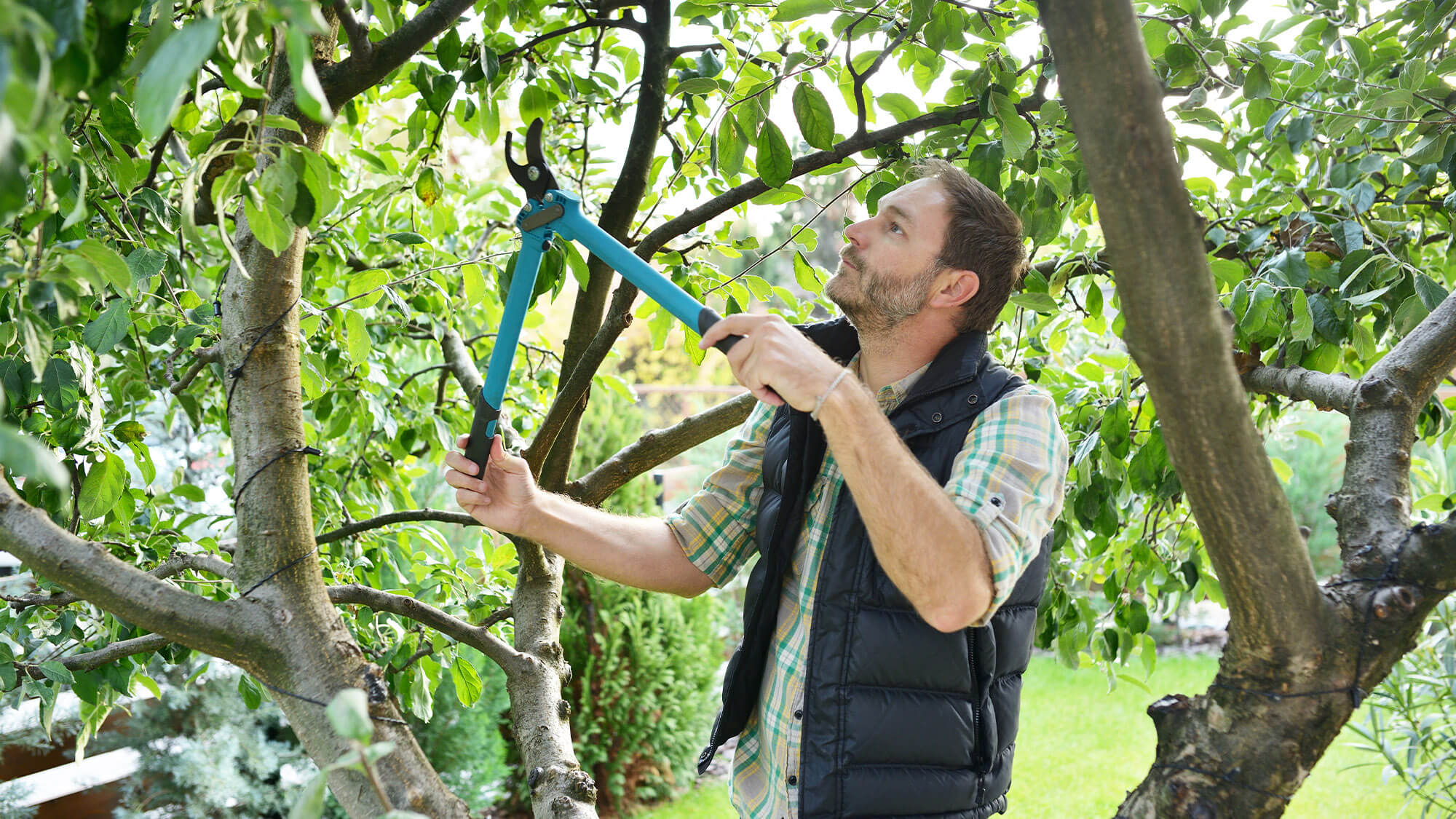Der Frühling ist da und lädt uns dazu ein, die schönen Tage im Garten zu genießen. Häufig stellt sich dabei heraus, dass die Pflanzen die Zeit zum Wuchern genutzt haben und einige sogar über die Zäune zu den Nachbarn gewachsen sind. Bevor Sie nun gleich zur Säge oder zum Trimmer greifen, sollten Sie sich zunächst ein wenig Zeit nehmen und herausfinden, was erlaubt und was sogar geboten ist. Hier unsere Rechte und Pflichten beim Baum- und Heckenschnitt, beim Pflanzen von Bäumen und bei der Heckengröße.

Diese Vorschriften sind ab der Gartenkonzeption zu beachten
Bei zwei angrenzenden Grundstücken darf jeder Eigentümer die Bäume, Sträucher und Büsche seiner Wahl pflanzen. Und sofern diese nicht höher als zwei Meter sind, darf er dies, wo er möchte. Für mehr als zwei Meter hohe Pflanzen ist gesetzlich geregelt, dass sie mindestens zwei Meter Abstand von der Grenze zwischen den beiden Grundstücken haben müssen.
Sie müssen daher bedenken, wie Ihre Pflanzen wachsen werden, um mögliche Schäden am Eigentum Ihres Nachbarn zu antizipieren und Ihre Entscheidungen entsprechend zu treffen. Wenn Sie Ihre Pflanzen unter zwei Metern Höhe halten können (achten Sie auf die Gefahr des Umfallens), zum Beispiel wenn Sie eine Hecke entlang der Grenze Ihres Grundstücks gepflanzt haben, ist das in Ordnung. Wenn die Pflanzen hingegen mehr als zwei Meter hoch werden, müssen Sie sie weit genug entfernt pflanzen, damit sie höher wachsen können, ohne gegen das Gesetz zu verstoßen.
Falls die Grenze zwischen den Grundstücken von einer nicht gemeinschaftlichen Mauer gebildet wird, darf nur der Eigentümer der Mauer Spalierbäume pflanzen (und diese müssen unter zwei Metern Höhe bleiben).
Sie können sich aber auch in Absprache mit Ihrem Nachbarn dazu entscheiden, als Grundstücksgrenze eine gemeinsame Hecke zu pflanzen. In diesem Fall sind Sie und Ihr Nachbar gemeinsam für die Heckenpflege verantwortlich.
Wenn der Abstand nicht eingehalten wird
Sollten die Pflanzen Ihres Nachbarn auf Ihr Grundstück wachsen, gibt Ihnen dies nicht automatisch das Recht, die Kettensäge herauszuholen und alles niederzumähen.
Sie dürfen lediglich die Wurzeln und Zweige abschneiden, die auf Ihr Grundstück „vorgedrungen“ sind. Und Sie dürfen die Früchte der Äste ernten, die auf Ihr Grundstück ragen. Wenn Sie hingegen die Äste entfernen möchten, müssen Sie sich an den Eigentümer wenden. Sie dürfen diese Äste nicht selbst zurückschneiden.
Es kann Ausnahmen geben
In mindestens drei Fällen dürfen Ihre Pflanzen höher sein als zwei Meter, auch wenn sie relativ nah am Nachbargrundstück stehen:
- Wenn Sie eine Vereinbarung mit Ihrem Nachbarn getroffen haben und dies belegen können (mit einem authentischen Schriftstück),
- bei Fortbestand einer sinnfälligen Einrichtung („Destination du père de famille“), was bedeutet, dass in einer Zeit gepflanzt wurde, als die beiden Grundstücke zusammengehörten, d. h. die Bäume waren bereits vor der Grundstücksaufteilung vorhanden,
- bei Überschreitung der zehnjährigen Verjährungsfrist, d. h. wenn Ihre Pflanzen bereits seit mehr als zehn Jahren den gesetzlich vorgeschriebenen Abstand nicht einhalten und Ihr Nachbar noch nie rechtliche Schritte für die Entfernung Ihrer Bäume oder deren Kürzung auf zwei Meter unternommen hat.
Besondere Nachbarschaftsverhältnisse
Wenn Ihr Grundstück an einer Straße, einer Eisenbahnlinie oder einem Gemeindeweg liegt, gelten für den Abstand Ihrer Pflanzen weitere Vorschriften. Manche Gemeinden stellen auch Ausnahmegenehmigungen aus. Hierfür sollten Sie die an Ihrem Wohnort gültigen Vorschriften konsultieren.



